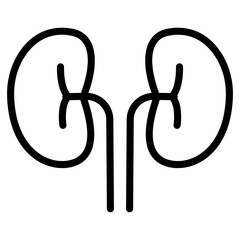While urgent care centers see a plethora of different illnesses and conditions, some thrive best in certain temperatures – or seasons. Here are some of the most common reasons behind urgent care visits, according to the season.
Spring
Influenza
Influenza, more commonly known as ‘the flu’, actually has its own season! From about December to March (and sometimes as late as May), the number of people afflicted with the fly increases dramatically. Flu symptoms, similar to symptoms of a common cold, can include a runny nose, sore throat, and a bad cough. Flu symptoms can be more severe than the common cold however, especially depending on the strain. Some people also experience body aches and chills and extreme fatigue when they have the flu. Since it’s viral, typically only medication to ease the discomfort is given. Because doctors and scientists have a pretty good grasp on when flu season is, you’ll find that flu vaccines are more readily available at this time of year.
Allergies
Every year, tons of people visit urgent care offices with symptoms like a stuffy nose, frequent sneezing, and dreadfully runny eyes. While some can mistake this for a cold or infection, it’s many times Spring allergies! A large population of the world suffer from spring allergies, sometimes known as ‘hay fever’. Allergies are worse during Spring as plants and trees release pollen. Yes, that yellow fuzzy stuff that collects on your car triggers allergies! There’s a nice variety of allergy medication (typically antihistamines) out there to quell your symptoms. If you suffer from Spring allergies, be sure to check your local weather channel to get updates on the pollen count.
Summer
Fractures and Sprains
Summer might make you think of suntan lotion, swimming pools, and short shorts. But for many nurses and doctors at urgent care offices, Summer is the season of slips, falls, and broken arms! With kids in some places out of school for most of the season, you quickly see an increase in fractures and sprains, particularly in children. The difference between a fracture and a sprain is that a fracture is a chipped or cracked bone, while a sprain affects the ligaments and not the actual bone. While both can be quite uncomfortable, a cast or sling combined with a little patience can usually correct the issue.
Lyme Disease
Lyme disease is a tick-borne illness that can cause an alarming range of symptoms and issues if left untreated. Because people tend to do more outdoor trekking in the summer, the possible exposure to ticks is greatly increased. While the majority of people with early-stage Lyme disease don’t experience symptoms, a circular red rash can oftentimes be seen. Antibiotics are typically given as treatment for this particular illness, although prevention is best, as Lyme disease can cause serious complications in some cases. If you live in an area with lots of ticks or plan to go hiking or camping, wear insect repellant and check for ticks on the body often.
Fall
Stomach Flu
The stomach flu, also known as norovirus or gastroenteritis, is often times the virus responsible for short bouts of vomiting and diarrhea. We know it doesn’t seem to fit with the usual pumpkin spice thoughts about Autumn, but the majority of reported stomach flu diagnoses happen in the fall. There’s no real ‘treatment’ to the stomach flu, so be sure to practice good hygiene. Wash your hands often and keep your distance from people who are infected.
The Common Cold
It’s estimated that the average person catches a common cold two or more times a year. There’s a common myth that getting a cold in the fall is because of the sudden weather change. The reality, however, is that colds are more commonly caught in the fall because people tend to stay in close quarters more and more as the weather gets colder. A cold is a virus, which means no antibiotics are going to plug that running nose! It’s best to practice prevention hygiene, aka washing your hands.
Winter
Pink Eye
Conjunctivitis, more commonly known as pink eye, is every daycare’s worst nightmare. Pink eye spreads extremely easily and quickly, which means close quarters can easily cause an outbreak. Conjunctivitis is relatively harmless, although its typical symptoms of itchy, sore, red, and runny eyes can give you a bit of a hard time. Pink eye cases flare in the winter because of increased close contact; To avoid contracting pink eye, keep your distance from those who are infected. Wash your hands often, and never touch your eyes (or face in general) with unwashed hands.
Bronchitis
Respiratory illnesses peak in the winter, and bronchitis is no exception to that rule. Bronchitis is when your bronchial tubes become inflamed, leaving you with a mucousy cough, and sometimes a bit of difficulty breathing. While winter air doesn’t cause bronchitis, if you already have it, the cold air can exacerbate your cough. Bronchitis is contagious, so stay at least a few feet away from those who are infected.
Walk-In Urgent Care in Saugus, MA
Knowing what illnesses to look out for during each season should help you be a little bit more prepared. Visit AFC Urgent Care Saugus for quick diagnosis and treatment! No appointment is needed; We happily treat walk-in patients and get you seen as quickly as possible.


